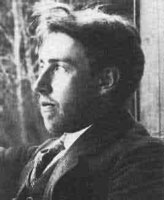Harald Bohr facts for kids
Quick facts for kids
Harald Bohr
|
||||||||||||||||||||||||||||||||||||||||||||||||||||||
|---|---|---|---|---|---|---|---|---|---|---|---|---|---|---|---|---|---|---|---|---|---|---|---|---|---|---|---|---|---|---|---|---|---|---|---|---|---|---|---|---|---|---|---|---|---|---|---|---|---|---|---|---|---|---|

Harald Bohr
|
||||||||||||||||||||||||||||||||||||||||||||||||||||||
| Born |
Harald August Bohr
22 April 1887 Copenhagen, Denmark
|
|||||||||||||||||||||||||||||||||||||||||||||||||||||
| Died | 22 January 1951 (aged 63) Gentofte, Denmark
|
|||||||||||||||||||||||||||||||||||||||||||||||||||||
| Resting place | Assistens Cemetery, Copenhagen | |||||||||||||||||||||||||||||||||||||||||||||||||||||
| Nationality | Danish | |||||||||||||||||||||||||||||||||||||||||||||||||||||
| Alma mater | University of Copenhagen | |||||||||||||||||||||||||||||||||||||||||||||||||||||
| Occupation | Mathematician | |||||||||||||||||||||||||||||||||||||||||||||||||||||
| Parent(s) | Christian and Ellen Bohr | |||||||||||||||||||||||||||||||||||||||||||||||||||||
| Relatives | Niels Bohr (brother) | |||||||||||||||||||||||||||||||||||||||||||||||||||||
|
Association football career
|
||||||||||||||||||||||||||||||||||||||||||||||||||||||
Harald August Bohr (born April 22, 1887 – died January 22, 1951) was a talented Danish mathematician and footballer. After finishing his studies in 1910, Bohr became a very important mathematician. He even started a new area of math called almost periodic functions. His brother was Niels Bohr, a famous physicist who won the Nobel Prize. Harald also played for the Danish national football team in the 1908 Summer Olympics, where he won a silver medal.
Contents
Harald Bohr's Early Life
Harald Bohr was born in 1887. His father, Christian Bohr, was a professor who studied how the body works. His mother, Ellen Adler Bohr, came from a well-known and wealthy family. Harald had a very close bond with his older brother, Niels. Their relationship was so strong that a newspaper, The Times, compared it to characters from a famous book by Charles Dickens.
Harald Bohr's Math Career
Becoming a Mathematician
Just like his father and brother, Harald Bohr went to the University of Copenhagen in 1904. There he studied mathematics. He earned his master's degree in 1909 and his doctorate a year later. Some of his teachers included Hieronymus Georg Zeuthen and Thorvald N. Thiele.
Important Math Discoveries
Bohr focused on a part of math called mathematical analysis. Much of his early work was on Dirichlet series. This was even the topic of his doctorate paper. He worked with Edmund Landau from Göttingen. Together, they created the Bohr–Landau theorem. This theorem helps understand how certain numbers are spread out in zeta functions.
Harald Bohr is famous for creating the field of almost periodic functions. These are special functions that repeat their values almost perfectly. He also worked with G. H. Hardy, a mathematician from the Cambridge.
Teaching and Recognition
In 1915, Bohr became a professor at Polyteknisk Læreanstalt. This school is now known as the Technical University of Denmark. He taught there until 1930. Then, he became a professor at the University of Copenhagen. He stayed in this job for 21 years until he passed away in 1951. One of his students was Børge Jessen.
Bohr was a visiting professor at Stanford University in the United States from 1930 to 1931. He also visited the Institute for Advanced Study in 1948. In 1945, he was chosen to be a member of the American Philosophical Society.
In the 1930s, Bohr spoke out against unfair policies in German math groups. These policies were against Jewish people. He wrote an article in a newspaper in 1934, criticizing these ideas.
Harald Bohr's Football Career
Harald Bohr was also a very good football player. He played for a long time with the team Akademisk Boldklub. He started playing for them when he was just 16 years old in 1903. In 1905, he even played alongside his brother, Niels, who was a goalkeeper.
Playing for Denmark
Harald was chosen to play for the Danish national team in the 1908 Summer Olympics. This was the first time football was an official event at the Olympics. Denmark had played in a different game in 1906, but the 1908 Olympic tournament was their first official international match.
Bohr scored two goals when Denmark beat the French "B" team 9–0. In the next game, the semi-final, Bohr played in a huge 17–1 win against France. This is still an Olympic record! Denmark then played against the host team, Great Britain, in the final. They lost 2–0, but Bohr still won a silver medal.
After the Olympics, he played one more game for the national team in 1910. Denmark won 2–1 against an English amateur team. Harald was so popular as a football player that when he defended his math doctorate, more football fans came to watch than mathematicians!
Harald Bohr as a Teacher
Bohr was known as an excellent teacher. The University of Copenhagen even has an annual award for great teaching named "the Harald" in his honor. Harald Bohr also wrote an important four-volume textbook on mathematical analysis with Johannes Mollerup. It was called Lærebog i Matematisk Analyse.
See also
- Bohr–Mollerup theorem
- Bohr compactification
- Bohr–Favard inequality
- Danish Mathematical Society
- List of select Jewish football (association; soccer) players


